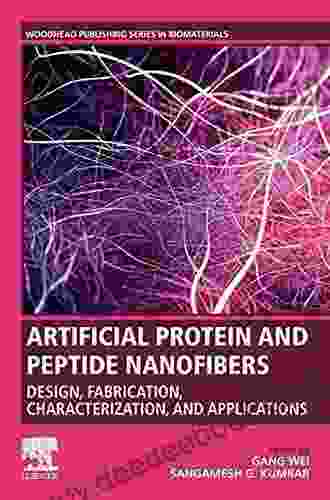Nanotechnology Enhanced Orthopedic Materials: A Revolution in Bone and Tissue Engineering

Nanotechnology has emerged as a transformative field, offering novel solutions in various industries, including medicine. In the realm of orthopedics, nanotechnology has paved the way for the development of innovative materials that hold immense promise for enhancing bone and tissue regeneration. This article delves into the advancements and applications of nanotechnology-enhanced orthopedic materials, exploring their potential to revolutionize bone and tissue engineering.
Nanotechnology in Orthopedic Materials
Nanotechnology involves the manipulation of matter on the nanoscale, typically ranging from 1 to 100 nanometers. At this scale, materials exhibit unique properties that differ significantly from their bulk counterparts. Nanomaterials possess enhanced strength, flexibility, biocompatibility, and other desirable characteristics that make them ideal candidates for orthopedic applications.
4 out of 5
| Language | : | English |
| File size | : | 10234 KB |
| Text-to-Speech | : | Enabled |
| Screen Reader | : | Supported |
| Enhanced typesetting | : | Enabled |
| Print length | : | 202 pages |
| Item Weight | : | 1.1 pounds |
| Dimensions | : | 9.61 x 6.69 x 0.55 inches |
Advantages of Nanotechnology in Orthopedic Materials
Nanotechnology-enhanced orthopedic materials offer several advantages over traditional materials used in bone and tissue engineering:
* Enhanced Biocompatibility: The nanoscale structure of these materials allows for improved interaction with biological tissues, promoting cell adhesion and proliferation. * Increased Osseointegration: The ability to customize the surface properties of nanomaterials enables the creation of implants that can seamlessly integrate with bone tissue, enhancing stability and preventing rejection. * Improved Mechanical Properties: Nanomaterials can be engineered to possess superior strength and toughness, mimicking the mechanical properties of natural bone, resulting in implants that can withstand the demands of rigorous activity. * Drug Delivery Capabilities: Nanomaterials can be designed to act as drug reservoirs, providing sustained and targeted drug delivery to the implant site, promoting bone healing and preventing infection.
Applications in Bone and Tissue Engineering
Nanotechnology-enhanced orthopedic materials have a wide range of applications in bone and tissue engineering, including:
* Bone Grafts: Nanomaterials can be used as bone grafts to replace damaged or diseased bone tissue. These grafts can promote bone growth and integration, reducing the need for autografts or allografts. * Implants: Nanotechnology-enhanced implants, such as artificial joints and plates, offer improved biocompatibility, osseointegration, and mechanical stability, reducing the risk of complications and the need for revision surgeries. * Tissue Engineering Scaffolds: Nanomaterials can be used to create scaffolds that guide and support the growth of new tissue. These scaffolds provide a favorable environment for cell proliferation and differentiation, promoting the regeneration of bone, cartilage, and other tissues. * Drug Delivery Systems: Nanomaterials can be engineered to deliver therapeutic agents directly to the implant site, providing localized and sustained treatment for bone-related conditions such as osteoporosis and infections.
Examples of Nanotechnology-Enhanced Orthopedic Materials
Several nanotechnology-enhanced orthopedic materials are currently under development and clinical investigation, including:
* Carbon Nanotubes: Carbon nanotubes have exceptional strength and flexibility, making them suitable for use in bone grafts and implants. They also possess electrical properties that facilitate neural regeneration. * Hydroxyapatite Nanoparticles: Hydroxyapatite is a natural component of bone tissue. Nanoparticles of hydroxyapatite can be used to enhance the biocompatibility and osseointegration of implants and bone grafts. * Biodegradable Polymers: Biodegradable polymers, such as polylactic acid and polyglycolic acid, can be combined with nanomaterials to create scaffolds that promote tissue regeneration. These scaffolds gradually degrade over time, leaving behind newly formed tissue. * Magnetic Nanoparticles: Magnetic nanoparticles are being explored for use in drug delivery systems. These nanoparticles can be guided to the target site using external magnetic forces, ensuring precise and localized drug delivery.
Challenges and Future Directions
Despite the significant advancements, challenges remain in the development and clinical translation of nanotechnology-enhanced orthopedic materials. These include:
* Cost and Scalability: Scaling up production of nanomaterials while maintaining quality and affordability is essential for widespread clinical use. * Long-Term Safety: The long-term effects of nanomaterials on human health need to be thoroughly investigated to ensure their safety and biocompatibility. * Regulatory Considerations: Establishing clear regulatory guidelines for the development and approval of nanotechnology-enhanced orthopedic materials is crucial.
Future research and development will focus on addressing these challenges and continuing to explore the potential of nanotechnology in bone and tissue engineering. The goal is to translate these innovative materials into effective clinical therapies that improve bone health and enhance patient outcomes.
Nanotechnology-enhanced orthopedic materials have the potential to revolutionize the field of bone and tissue engineering. By harnessing the unique properties of nanomaterials, researchers and clinicians are developing materials that offer superior biocompatibility, osseointegration,
4 out of 5
| Language | : | English |
| File size | : | 10234 KB |
| Text-to-Speech | : | Enabled |
| Screen Reader | : | Supported |
| Enhanced typesetting | : | Enabled |
| Print length | : | 202 pages |
| Item Weight | : | 1.1 pounds |
| Dimensions | : | 9.61 x 6.69 x 0.55 inches |
Do you want to contribute by writing guest posts on this blog?
Please contact us and send us a resume of previous articles that you have written.
 Book
Book Novel
Novel Chapter
Chapter Text
Text Genre
Genre Library
Library E-book
E-book Magazine
Magazine Newspaper
Newspaper Paragraph
Paragraph Sentence
Sentence Bookmark
Bookmark Shelf
Shelf Glossary
Glossary Foreword
Foreword Preface
Preface Synopsis
Synopsis Footnote
Footnote Scroll
Scroll Tome
Tome Classics
Classics Library card
Library card Narrative
Narrative Biography
Biography Encyclopedia
Encyclopedia Resolution
Resolution Librarian
Librarian Catalog
Catalog Periodicals
Periodicals Scholarly
Scholarly Lending
Lending Rare Books
Rare Books Interlibrary
Interlibrary Literacy
Literacy Study Group
Study Group Dissertation
Dissertation Awards
Awards Reading List
Reading List Theory
Theory Textbooks
Textbooks David Donachie
David Donachie R H Sheldon
R H Sheldon Kristin Kladstrup
Kristin Kladstrup Ross Bentley
Ross Bentley Loui Lord Nelson
Loui Lord Nelson Elana K Arnold
Elana K Arnold Jill Lynn
Jill Lynn Katy R Kudela
Katy R Kudela Robert Lewis
Robert Lewis Tai Ming Cheung
Tai Ming Cheung Caroline Tervo
Caroline Tervo Joe Parkinson
Joe Parkinson Robert Moose
Robert Moose Mark Casey Evans
Mark Casey Evans Nathan Eckstrand
Nathan Eckstrand Lise Mcclendon
Lise Mcclendon Carla Damron
Carla Damron Heather B Moore
Heather B Moore Pamela H Mackellar
Pamela H Mackellar Lisa Wheeler
Lisa Wheeler
Light bulbAdvertise smarter! Our strategic ad space ensures maximum exposure. Reserve your spot today!

 Alec HayesThe Pitch Perfect Movie Tie-In: A Comprehensive Guide to the Music, Fashion,...
Alec HayesThe Pitch Perfect Movie Tie-In: A Comprehensive Guide to the Music, Fashion,...
 Raymond ChandlerVisions Of The Dead: Unraveling the Mysteries of Dream Walkers and Afterlife...
Raymond ChandlerVisions Of The Dead: Unraveling the Mysteries of Dream Walkers and Afterlife... Miguel de CervantesFollow ·16k
Miguel de CervantesFollow ·16k Kyle PowellFollow ·11.1k
Kyle PowellFollow ·11.1k Zadie SmithFollow ·6.7k
Zadie SmithFollow ·6.7k W.B. YeatsFollow ·2.8k
W.B. YeatsFollow ·2.8k Gilbert CoxFollow ·9.1k
Gilbert CoxFollow ·9.1k Osamu DazaiFollow ·7.6k
Osamu DazaiFollow ·7.6k Guy PowellFollow ·15.9k
Guy PowellFollow ·15.9k Ken FollettFollow ·14.8k
Ken FollettFollow ·14.8k

 Dominic Simmons
Dominic SimmonsIcky Island: An Unforgettable Adventure for Kids!
Introducing Icky Island: A Delightful One...

 Carlos Fuentes
Carlos FuentesThe Midnight Breed: Embracing the Shadows and Unlocking a...
Welcome to the captivating world of...

 Ike Bell
Ike BellTwelve Steps Toward Political Revelation: A Path to...
Politics, often perceived as a complex and...

 Cameron Reed
Cameron ReedTravels in Arizona Goldfield: Unraveling the Threads of...
Nestled amidst the rugged...

 John Grisham
John GrishamFlashpoints of Cinema History and Queer Politics:...
The relationship between cinema history and...
4 out of 5
| Language | : | English |
| File size | : | 10234 KB |
| Text-to-Speech | : | Enabled |
| Screen Reader | : | Supported |
| Enhanced typesetting | : | Enabled |
| Print length | : | 202 pages |
| Item Weight | : | 1.1 pounds |
| Dimensions | : | 9.61 x 6.69 x 0.55 inches |








